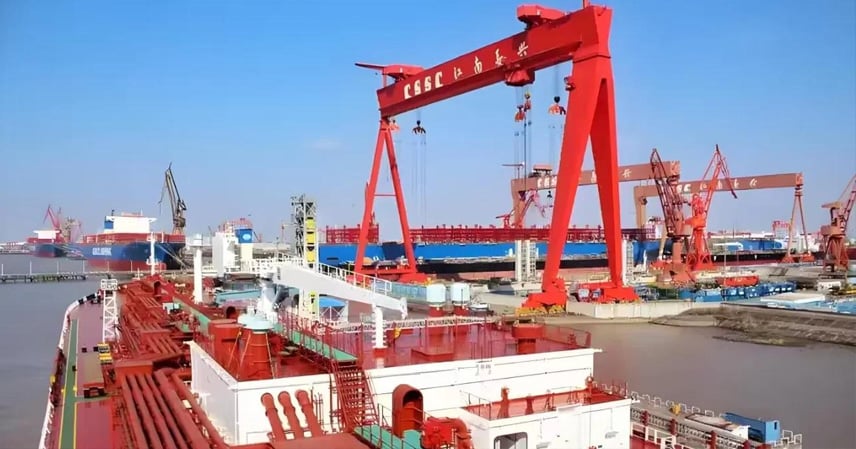On September 20, 2025, Jiangnan Shipyard cut the first steel plate for the world’s first 35,000-ton nuclear-powered icebreaking research vessel. Codenamed Xuelong-3, the ship is scheduled to launch in 2028, equipped with a massive 60 MW shaft power system, making it a true milestone in China’s polar exploration capabilities.
A Giant Leap in Polar Technology
With over 80,000 horsepower and the ability to break through ice thicker than 3 meters, Xuelong-3 dwarfs its predecessors. Powered by China National Nuclear Corporation’s (CNNC) small modular reactor technology, the vessel boasts zero emissions, inherent safety, and flexible deployment. Its nuclear reactor sits below the waterline, allowing the ocean to act as a natural cooling system, eliminating the need for off-site emergency measures.
Unlike floating nuclear power stations, which focus on electricity generation, Xuelong-3 demands stable and reliable power output, especially during icebreaking. This makes its design one of the most sophisticated nuclear applications at sea.
How It Breaks Ice
Like other icebreakers, Xuelong-3 relies on a rounded bow design and powerful propulsion to crush Arctic ice sheets. Its hull is coated with polymer paint to reduce friction, enabling smoother navigation.
When breaking ice, the ship shifts ballast water: emptying forward tanks and filling aft tanks to lift the bow onto the ice, then refilling the forward tanks to crush it under weight. If the ice is too thick, the ship can ram forward with speed and mass, forcing cracks through solid ice barriers.
Outpacing Previous Generations
China’s current icebreakers—Xuelong and Xuelong-2—have limitations. The original Xuelong can continuously break through 1.2 meters of ice, while Xuelong-2 manages 1.5 meters.
By comparison, Xuelong-3 triples the capability, with over 3 meters of icebreaking power and years-long endurance without refueling. This leap ensures that China can sustain long-term Arctic missions without relying on foreign logistical support.
Global Comparison with Russia
Russia’s nuclear icebreakers, such as the Sibir (33,500 tons) and Arktika-class vessels (170 MW reactors), have long dominated Arctic operations. However, Xuelong-3 surpasses them in displacement at 35,000 tons, while maintaining competitive icebreaking performance.
Though Russia’s reactors deliver more raw power, China’s small modular reactor technology offers higher safety margins, lower environmental impact, and greater flexibility—key factors for future polar missions.
Strategic Importance
Xuelong-3 is not just a ship; it represents a major upgrade in China’s polar research fleet. It enables extended Arctic stays, supports studies on ice sheets, atmosphere, and marine ecosystems, and provides logistics for deep-sea submersibles and future polar bases.
In the near future, Xuelong-3 will operate alongside Xuelong and Xuelong-2, forming a Chinese polar icebreaker fleet capable of joint missions to the Arctic and Antarctic. This significantly enhances China’s scientific influence and role in polar governance.
With construction already underway, Jiangnan Shipyard is moving at full speed, and by 2028, the world will witness the rise of China’s most ambitious nuclear-powered vessel yet.
References
- China National Nuclear Corporation (CNNC) reports
- Jiangnan Shipyard project announcements



